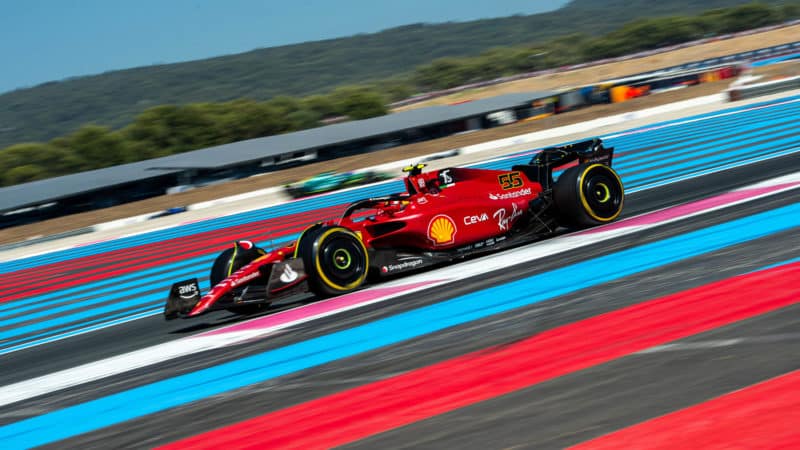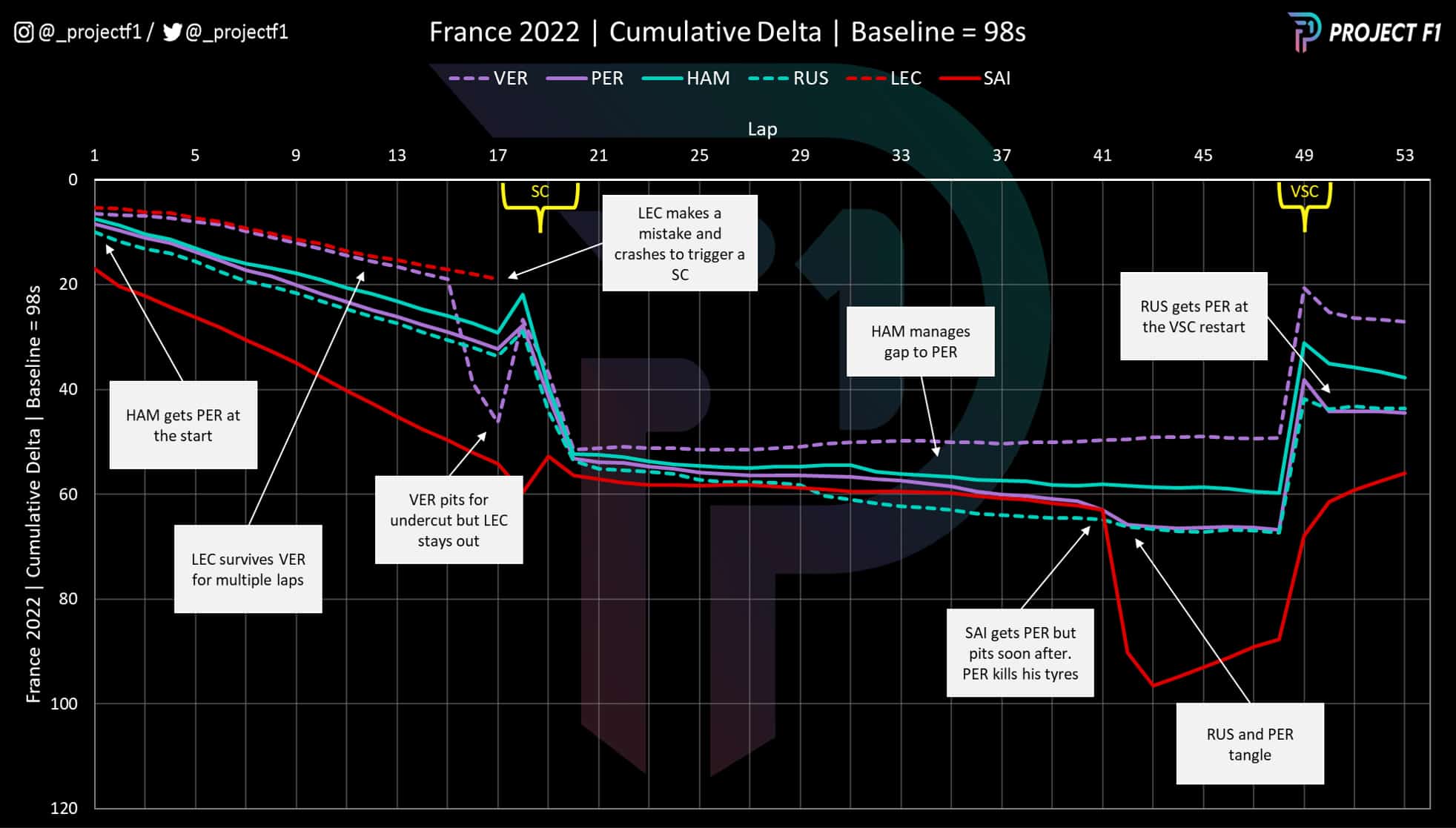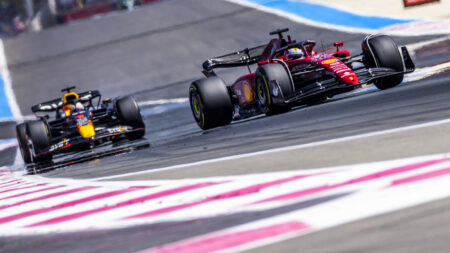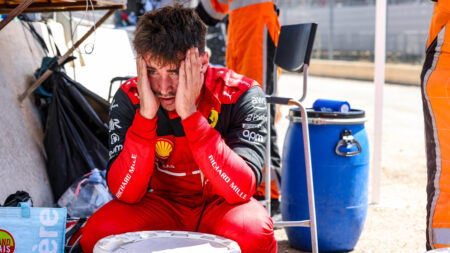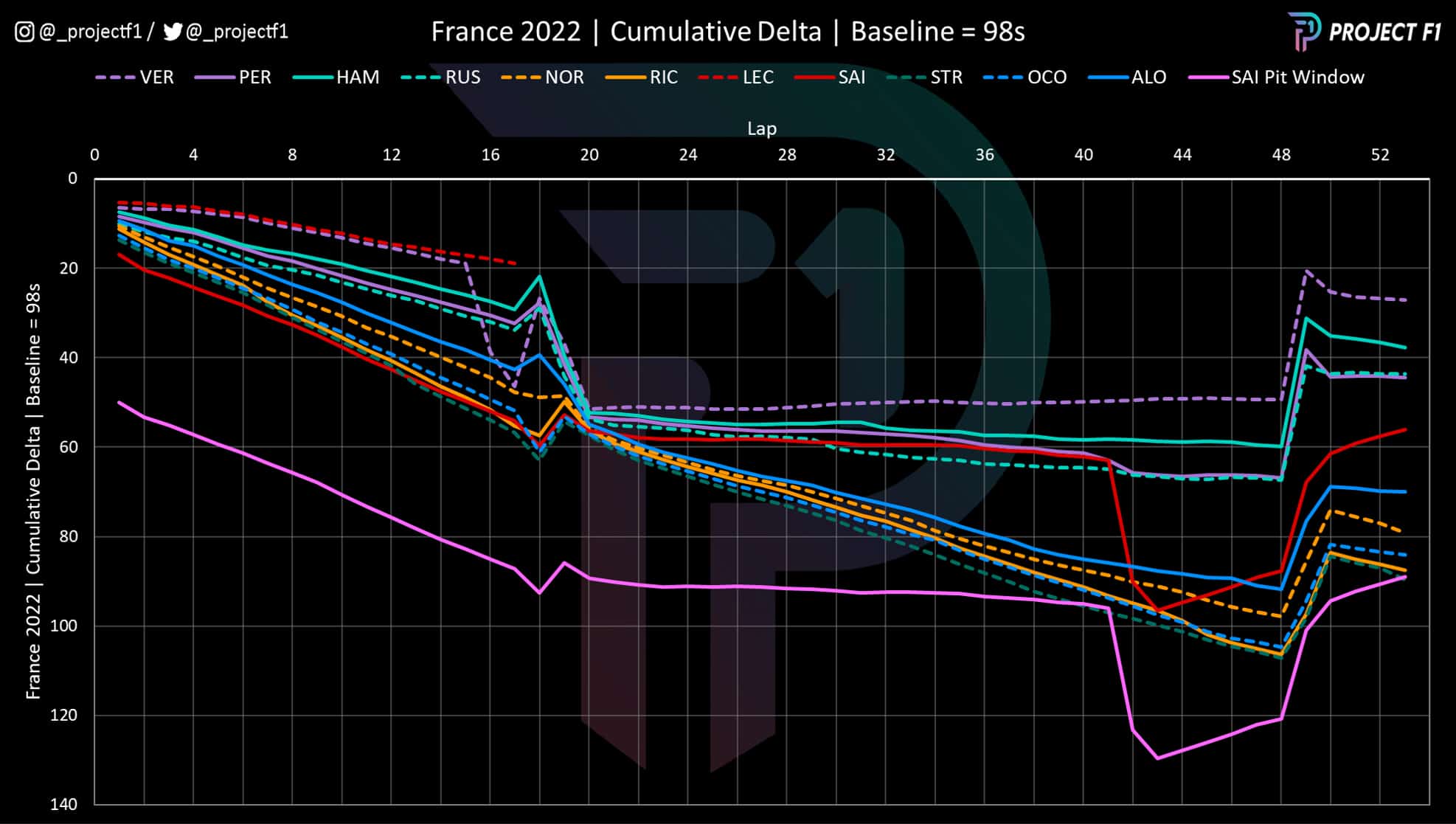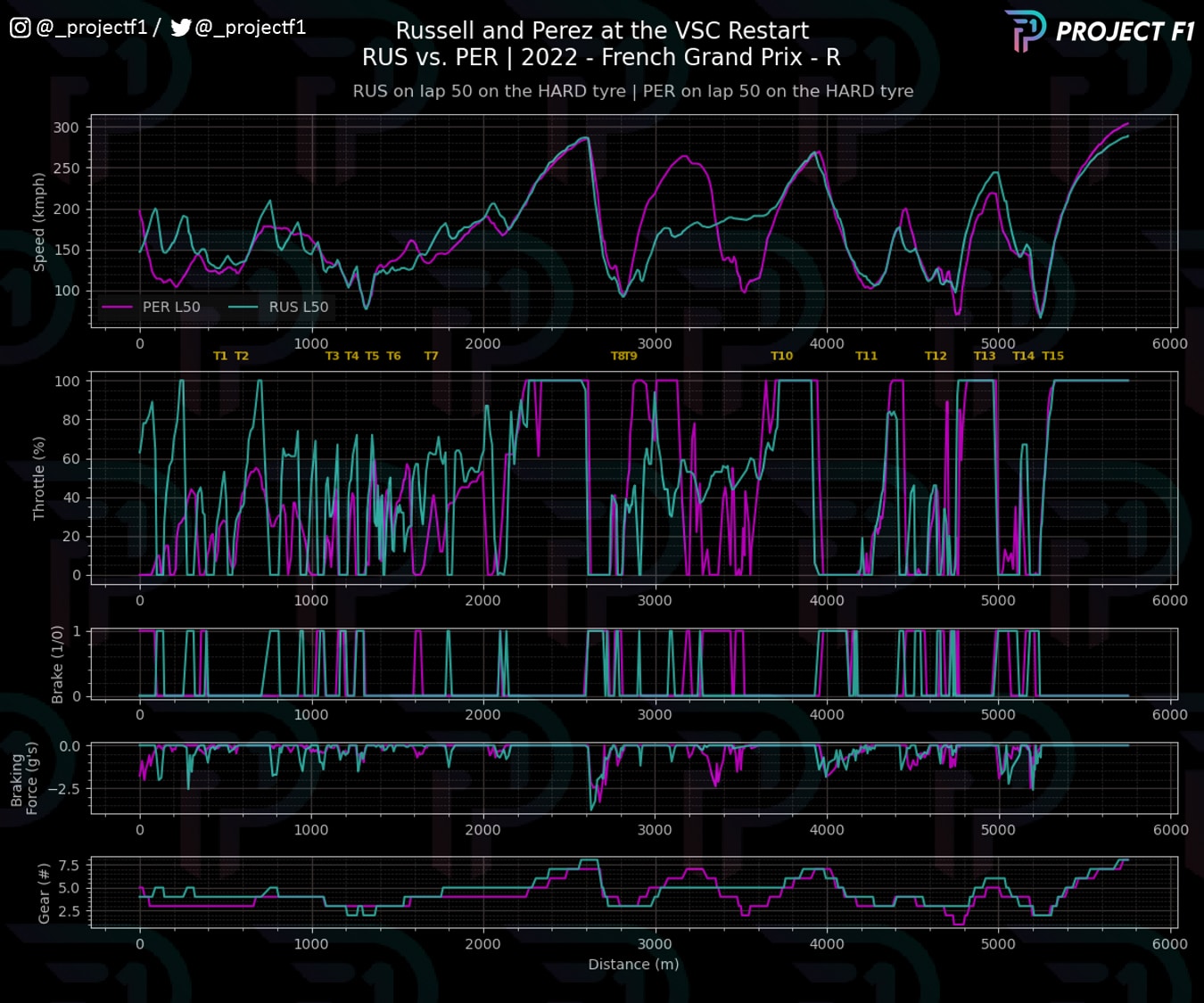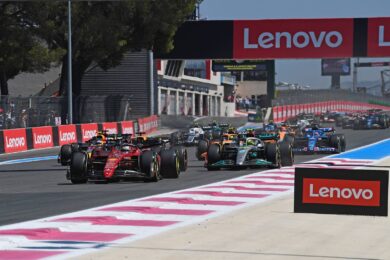It meant that Red Bull was unable to pincer Leclerc into a strategic cul-de-sac, making it a straight fight between Verstappen and Leclerc at the front.
The initial tight trace between both drivers shows how closely matched they were, with the Red Bull’s straightline speed advantage making up for Ferrari’s pace in the corners.
But the gap between Leclerc and Verstappen begins to widen at around lap 13 as running in the dirty air hampered the Red Bull driver.
With Perez out of play, the team couldn’t pressure Leclerc with a split strategy so pitted Verstappen first with a view to capitalising on the undercut.
Ferrari and Leclerc opted to stay out, and the continued pace justified that decision, despite Leclerc’s tyres starting to blister. But then it was all over.

Leclerc crashes out
Marc de Mattia / DPPI
Driver error was the confirmed cause of Leclerc’s spin into the wall, but the story isn’t as simple as that. With Ferrari’s recent history of engine woes, the team came into this weekend being cautious. Its conservative engine mode was matched with a more-aggressive setup, with the aim of using trimmed downforce to reduce Red Bull’s top speed advantage.
But the extreme set-up altered the car’s balance. Typically it’s the front, not rear, tyres that bear the brunt and become vulnerable at a circuit such as France. But instead of the conventional understeer, it was at the rear where Leclerc faced issues. And ultimately it was the lively rear end that undid Leclerc’s efforts at the weekend.
At the same time, Hamilton’s unwitting role as Leclerc’s support driver had ended, and he continued his race to consolidate P2. Hamilton did an exceptional job to manage the pace in such a way that Perez was rarely ever a threat, as shown in Chart 1. The gap between the two drivers was stable for most of the race – with Perez being the one to struggle on tyres and keep the pace alive.
Chart 2: Trend pace, Sainz vs Perez
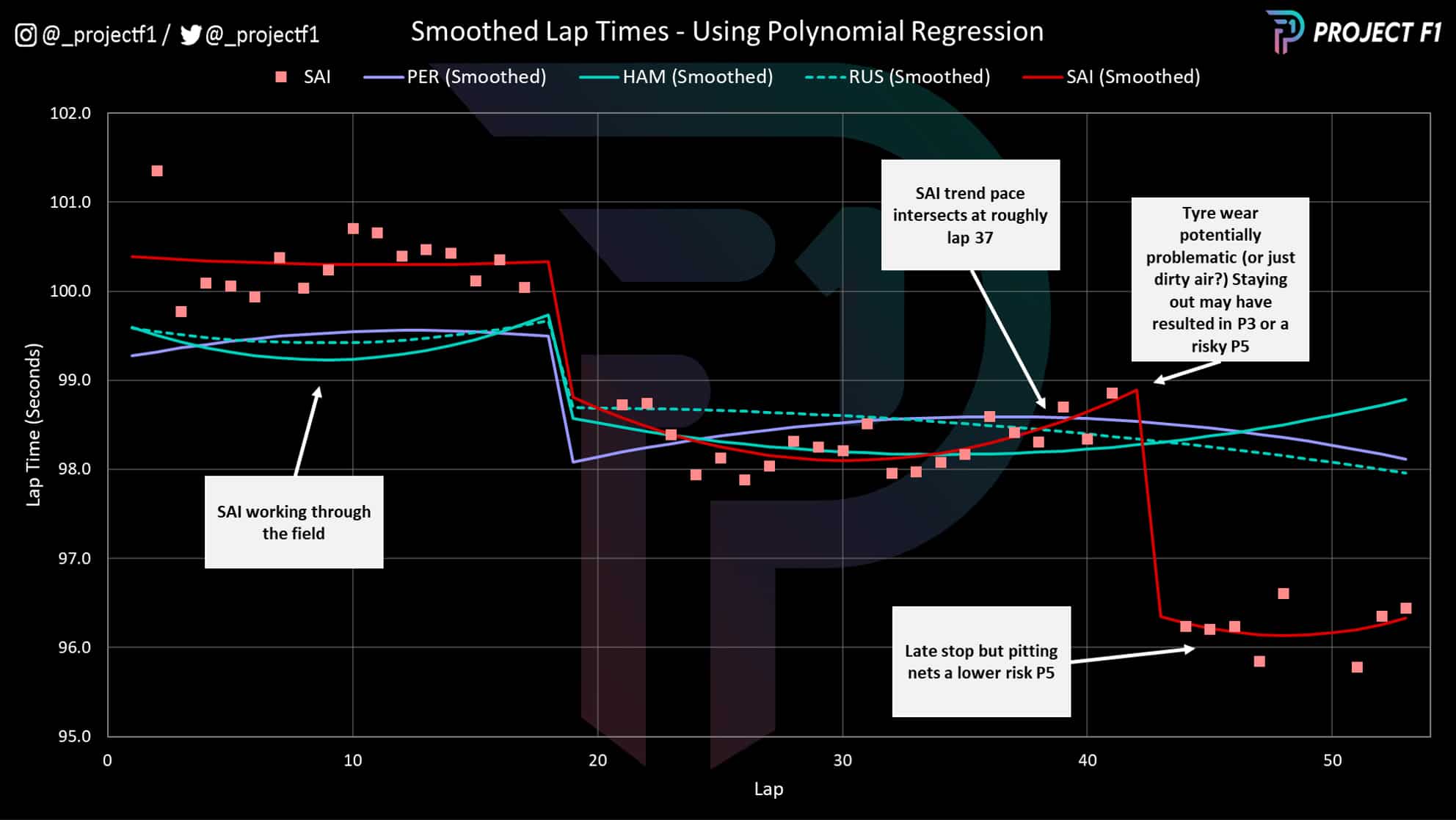
While the order at the front was stabilising, Sainz was making steady work of the traffic in front; the opportune safety car triggered by Leclerc’s crash bringing him up to the rest of the pack and enabling an efficient switch to fresh tyres.
Chart 2 shows Sainz’s stellar pace compared to the Mercedes duo and Red Bull of Sergio Perez. With the gap closed up, it was not long before Sainz was making short work of the drivers ahead, as can be clearly seen in Chart 1.
But Sainz was in a quandary. Having started the race on the hard tyre, he was now on the mediums, trying to make it to the end against the rest of the field on hard tyres. We arrived at the predictable fork in the road of: 2 stop vs 1 stop strategy. History will show that Ferrari opted for the 2-stop. But was it the right call?
